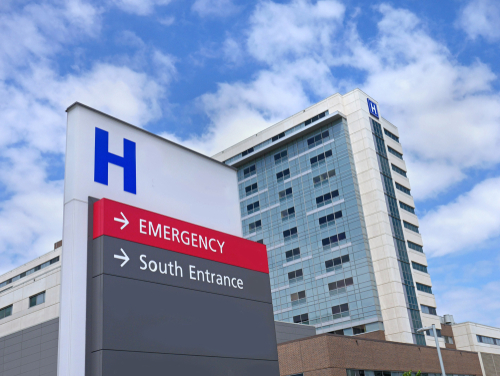New Report Explores the State of Healthcare Facility Security
HID, an ASSA ABLOY Group brand and provider of identity solutions, has released its State of Healthcare Security Report. Based on input from more than 200 security and IT professionals working in a broad range of healthcare facilities, the report delves into the core concerns for the healthcare industry and upcoming innovations and technologies that address them.

The survey uncovers seven themes, as follows:
1. Healthcare’s Surge in Both Cyber and Physical Security Attacks. Instances of ransomware attacks on the healthcare sector have almost doubled, according to the Office of the Director of National Intelligence. Additionally, a staggering 80% of nurses have encountered workplace violence within the past year, according to National Nurses United, a prominent national union of registered nurses.
2. A Critical Need for Digital and Physical Security Integration. Seventy-seven percent of survey respondents believe that it is important for their healthcare facilities to achieve digital and physical security integration to fight the dramatic increase in cyber and physical security attacks.
3. Evolving Security Practices: From Physical to Digital Identity Management. Conventional physical approaches such as ID badges are progressively being complemented, or in certain instances, replaced, by digital credentials such as mobile and biometric authentication. The survey indicates that 32% of healthcare facilities implement biometric authentication.
4. Securing Visitor Access: Enhancing Safety and Streamlining Compliance. Efficiently and effectively managing visitors through these integrated systems is crucial. Presently, 38% of healthcare facilities continue to depend on paper forms and badges for visitor access management, 30% have implemented access control systems, and 24% use electronic patient management solutions.
5. Manual vs. Automated Security: The Shift Towards Real-Time Responses. The survey revealed that 56% of healthcare facilities utilize automated alert systems that provide real-time notifications of potential threats. These systems allow staff to respond efficiently to emerging situations, often before they escalate into full-scale incidents.
6. Barriers to Technological Adoption: Budget Constraints and Beyond. The survey revealed that budget constraints are the most significant barrier, cited by 74% of respondents. However, the cost of inaction is likely to be far greater. The financial and reputational damage caused by a security breach can be devastating, not to mention the potential impact on staff and patient safety.
7. Looking Ahead: Embracing a Layered Security Approach. The surge in violence within healthcare workplaces, coupled with the fact that healthcare is now a prime target for cybercriminals, calls for a multi-layered security approach. This approach propels the adoption of integrated security management systems, real-time location systems, biometrics, and physical security measures such as duress badges and more.
The full report, which includes additional data and analysis, is available here.
ALSO READ: How to Better Secure Your Healthcare Facility
The post New Report Explores the State of Healthcare Facility Security appeared first on Facilities Management Advisor.

